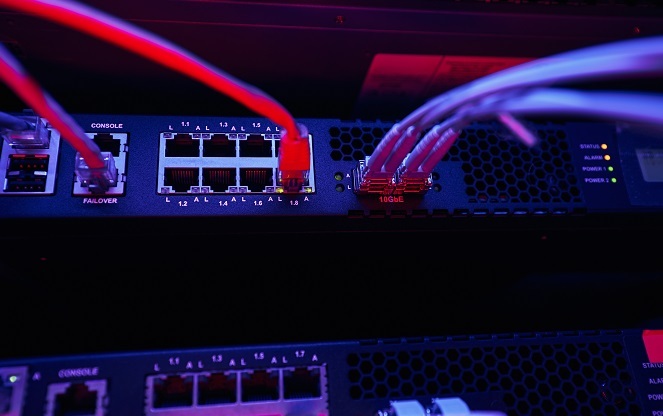
 Data Structure
Data Structure Networking
Networking RDBMS
RDBMS Operating System
Operating System Java
Java MS Excel
MS Excel iOS
iOS HTML
HTML CSS
CSS Android
Android Python
Python C Programming
C Programming C++
C++ C#
C# MongoDB
MongoDB MySQL
MySQL Javascript
Javascript PHP
PHP
- Selected Reading
- UPSC IAS Exams Notes
- Developer's Best Practices
- Questions and Answers
- Effective Resume Writing
- HR Interview Questions
- Computer Glossary
- Who is Who
What is the full form of CN?
Introduction
Core Network (CC) refers to the central part of a telecommunications network that serves as the backbone for transmitting data, voice, and multimedia traffic between different network segments or nodes. It is responsible for routing and managing network traffic, as well as providing various network services, such as authentication, authorization, and accounting.

The core network is also known as the mobile core network, which is responsible for handling voice and data traffic for mobile devices, such as smartphones and tablets. It may include various technologies, such as circuit-switched and packet-switched networks, and may support different network generations, such as 2G, 3G, 4G, and 5G, depending on the type of telecommunications system being used.
Components of CN
The components of a core network may include
Switches Switches are network devices that facilitate the routing and switching of data packets within the core network. They may use various routing protocols and algorithms to determine the optimal path for data packets to reach their destination.
Routers Routers are network devices that facilitate the routing of data packets between different networks or subnets.
Gateways Gateways are devices that serve as interfaces between different types of networks or protocols.
Servers Servers are computers or systems that provide various network services, such as authentication, authorization, accounting, and signalling
Network Management Systems (NMS) NMS is a set of software applications or tools used to monitor, configure, and manage the components and resources of the core network.
Network Security Devices Core networks typically employ various security measures to protect against unauthorised access, data breaches, and other security threats
Network protocols Core networks use various protocols for communication and coordination among network elements. This may include protocols such as IP (Internet Protocol), MPLS (Multiprotocol Label Switching), SIP (Session Initiation Protocol), and others.
Functioning of CN
Common functions of a core network include
Routing and switching The core network uses switches and routers to route and switch data packets or voice traffic between different network elements, such as base stations, access points, and other network segments.
Network services The core network provides various network services, such as authentication, authorization, and accounting (AAA), which are essential for managing network resources and establishing secure connections.
Network signalling The core network handles signalling, which involves the exchange of control messages between network elements to establish, modify, or terminate network connections.
Quality of Service (QoS) management The core network may implement QoS management mechanisms to ensure that different types of traffic, such as voice, video, and data, are prioritised and managed appropriately.
Network management The core network is typically managed using network management systems (NMS), which provide tools and applications for monitoring, configuring, and managing network elements and resources.
Security The core network employs various security measures to protect against unauthorised access, data breaches, and other security threats. This may include firewalls, intrusion detection and prevention systems (IDPS), virtual private network (VPN) gateways, encryption mechanisms, and other security devices.
Interconnectivity The core network may provide interconnectivity between different networks or operators, allowing for the exchange of traffic between different service providers or networks.
Importance of CN in telecommunications
The core network plays a crucial role in telecommunications for several reasons
Data and traffic routing The core network is responsible for routing and switching data packets or voice traffic between different network segments or nodes which ensures that data is efficiently and reliably routed to their destinations.
Network management The core network provides tools and applications for monitoring, configuring, and managing network elements and resources. Network operators use network management systems (NMS) to monitor network performance, troubleshoot issues, provision and configure network resources, and ensure smooth network operations.
Service provisioning The core network enables the provisioning of various network services, such as authentication, authorization, and accounting (AAA), which are essential for managing network resources and establishing secure connections.
Interconnectivity The core network provides interconnectivity between different networks or operators, allowing for the exchange of traffic between different service providers or networks.

Quality of Service (QoS) management The core network may implement QoS management mechanisms to ensure that different types of traffic, such as voice, video, and data, are prioritised and managed appropriately.
Security The core network employs various security measures to protect against unauthorised access, data breaches, and other security threats. This includes firewalls, intrusion detection and prevention systems (IDPS), virtual private network (VPN) gateways, encryption mechanisms, and other security devices.
FAQs
What is Core Network?
Ans: The core network, in the context of telecommunications and computer networks, refers to the central part of a network that serves as the backbone for transmitting data, voice, and multimedia traffic between different nodes or segments of a network. It is responsible for routing and switching data packets or circuit-switched connections to their intended destinations within the network or to external networks, such as the Internet.
Why is the Core network important in the present world?
Ans: The core network is important in the present world as it serves as the backbone for data transmission, supports data-intensive applications, enables Internet connectivity, facilitates service delivery, ensures network resilience and security, and plays a critical role in modern communication and connectivity.
Where is Core Network mainly used?
Ans: Core networks are used in various domains and industries, including telecommunications, ISPs, cloud service providers, data centres, enterprises, and public sector/government networks, to provide reliable, efficient, and secure communication and connectivity.

